CSS Houdini in short:
From CSS Custom Properties to JavaScript Worklets and back

About me

CSS Custom Properties

Native CSS Syntax
/* declaration */
--VAR_NAME: <declaration-value>;
/* usage */
var(--VAR_NAME [, <fallback-if-not-defined-value>])/* root element selector (global scope) */
/* usually <html> */
:root {/* make available for whole the app */
/* CSS variables declarations */
--main-color: #ff00ff;
--main-bg: rgb(200, 255, 255);
}
body {
/* variable usage */
color: var(--main-color);
background-color: var(--main-bg, #fff);
}"--" prefix picked to prevent preprocessors to compile Custom Properties
Declaration and usage
Supported in all the major browsers

Usage example: Emulating non-existing CSS rule
Using Custom Properties With JavaScript
- pass breakpoints data from CSS
- read values...
const breakpointsData =
document.querySelector('.breakpoints-data');
// GET
const phone = getComputedStyle(breakpointsData)
.getPropertyValue('--phone');
// SET
breakpointsData.style
.setProperty('--phone', 'custom');.breakpoints-data {
--phone: 480px;
--tablet: 800px;
}- assign CSS value calculated in JS
- update UI depending on the application state...
Rotate page elements using CSS variables
Current constraints
Custom CSS Properties by default are:
- not typed
- in result - not animatable


Why animation is important

Why typed CSS properties and values are important
- support and validation in IDE
- syntax highlight
- performance
- Browser support
- DevTools support
- linters, compilers...
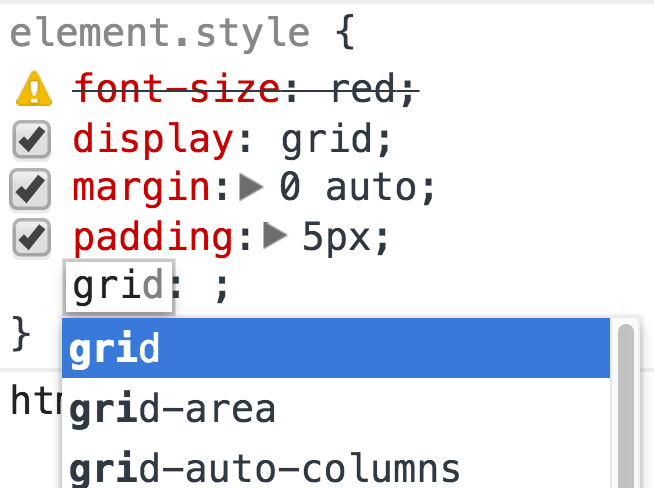
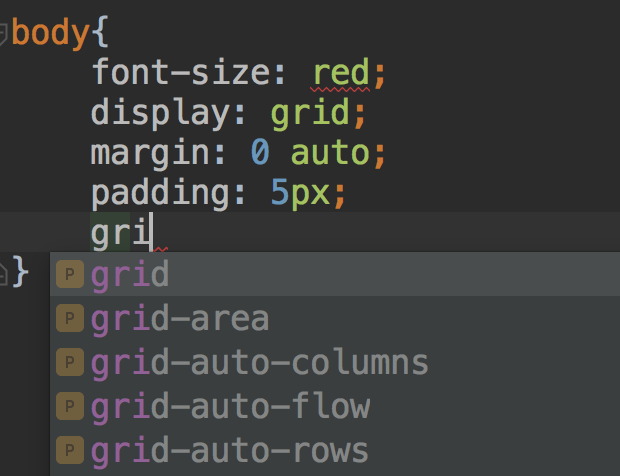


Introducing CSS property types?
| Property | Value definition field | Example value |
|---|---|---|
| text-align | left | right | center | justify | center |
| padding-top |
<length> | <percentage> | 5% |
| border-width | [ <length> | thick | medium | thin ]{1,4} | 2px medium 4px |
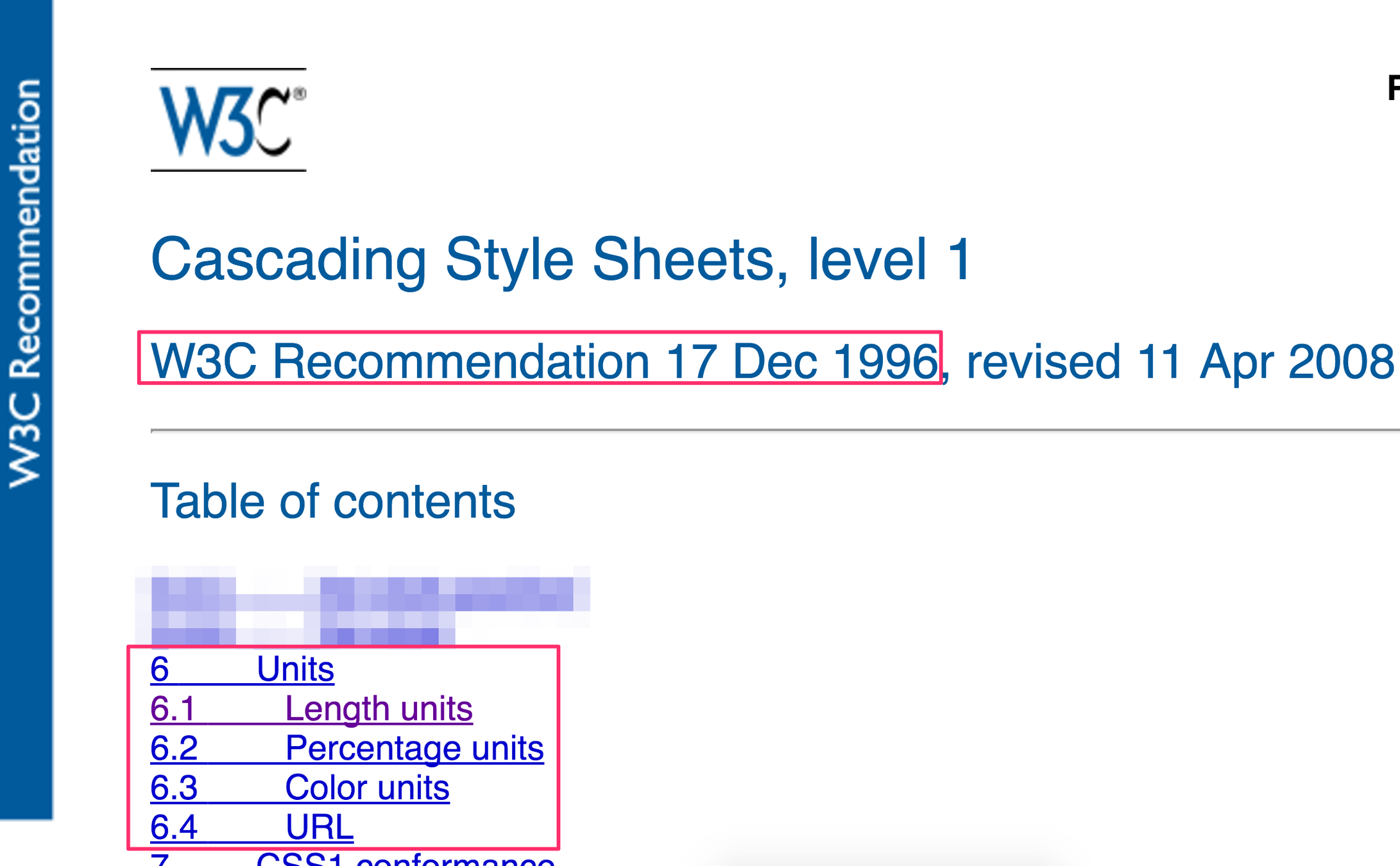
Houdini group
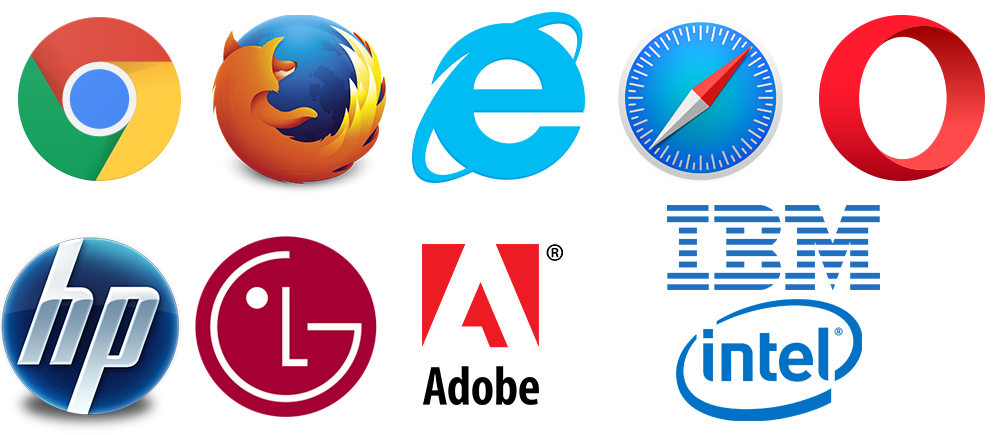
CSS
Properties
& Values
API
CSS
Typed
OM
CSS
Parser
API
Font
Metrics
API
Worklets
CSS
Layout
API
CSS
Paint
API
CSS
Animation
Worklet
API
CSS
Properties
& Values
API
CSS
Typed
OM
// CSS -> JS
const styleMap = document.body.computedStyleMap();
console.log( styleMap.get('font-size') );
// CSSUnitValue {value: 14, unit: "px"}
// JS -> JS
console.log( new CSSUnitValue(5, "px") );
// CSSUnitValue {value: 5, unit: "px"}
// JS -> CSS
// set style "transform: translate(50px, 80%);"
document.body.attributeStyleMap
.set('transform',
new CSSTransformValue([
new CSSTranslate(
new CSSUnitValue(50, 'px'), new CSSUnitValue(80, '%')
)]));
behind the “Experimental Web Platform features” flag in

CSS.registerProperty({
name: "--stop-color",
syntax: "<color>",
inherits: false,
initialValue: "black"
});

Why it's important
Without
With




"syntax" of CSS properties
Default: "*"
Supported Values:
"<length>"
"<number>"
"<percentage>"
"<length-percentage>"
"<color>"
"<image>"
"<url>"
"<integer>"
"<angle>"
"<time>"
"<resolution>"
"<transform-function>"
Examples:
"<length> | <percentage>"
both, but not calc() combinations
"<length-percentage>"
both + calc() combinations of both types
"big | bigger"
accepts either value
"<length>+"
accepts a list of length values
And...

CSS Custom Properties
should be animatable
since they are provided with types?
Let's try!

Native CSS Animation
element.animate([
{cssProperty: 'fromValue'},
{cssProperty: 'toValue'}
], {
duration: timeInMs,
fill: 'none|forwards|backwards|both',
delay: delayInMs,
easing: 'linear|easy-in|cubic-bezier()...',
iterations: iterationCount|Infinity
});rabbit.animate(
[
{ transform: "translateX(0)" },
{ transform: "translateX(115px)" }
],
{
duration: 1000, // ms
fill: "forwards", // stay at the end
easing: "easy-in-out"
}
);@keyframes rabbitMove {
0% {
transform: translateX(0);
}
100% {
transform: translateX(115px);
}
}
.rabbit {
animation: rabbitMove 1s ease-in-out;
animation-fill-mode: forwards;
}

Polyfill is available 🎉
Native JavaScript animation
CSS/JS/Browser
CSS
JavaScript
Browser
CSS Custom Properties
CSS Property Types
Typed OM API
CSSOM
?
Browser rendering
Pixel
rendering
pipeline
Internal browser engine
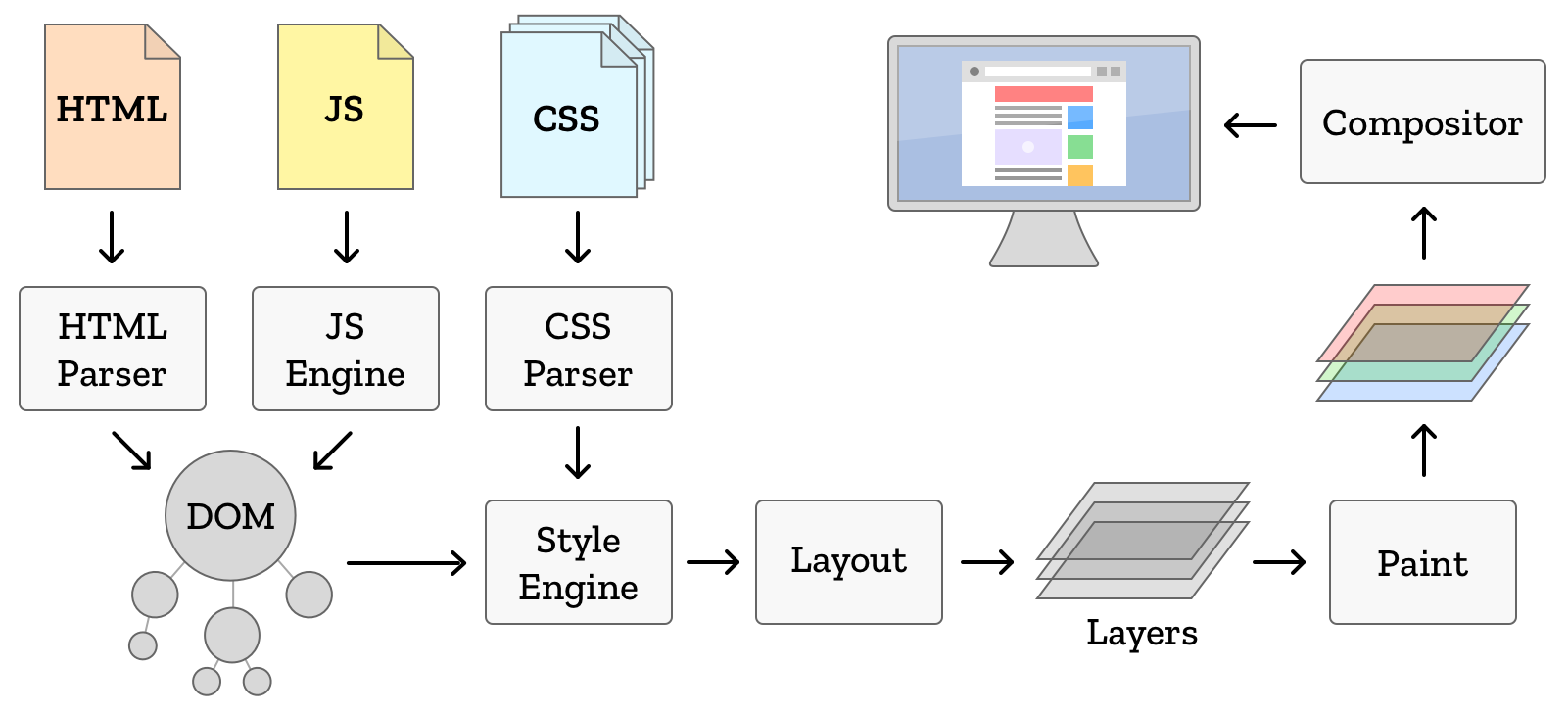



Houdini’s goal is to expose browser APIs to allow web developers to hook up their own code into the CSS engine.
It’s probably not unrealistic to assume that some of these code fragments will have to be run every. single. frame.
- similar to Web and Service Workers
- have a separate thread
- don't interact with DOM directly
- focus on performance
- use the latest JS additions:
ES Modules, classes, Promises/await
- triggered when needed and possible


The paint stage of CSS is responsible for painting the background, content and highlight of a box (based on the box’s size and computed style). The API allows to paint a part of a box in response to size / computed style changes with an additional <image> function.
- background-image
- border-image
- list-style-image
- content
- cursor

Custom image can be paint on every browser paint action.
Applicable for:

CSS
Paint
API
Paint Worklet example
/* CSS (add CUSTOM property and register a paint directive) */
.multi-border {--border-top-width: 10; border-image: paint(border-colors);}
// JS (providing a type for the CUSTOM property to pass to JS)
CSS.registerProperty({
name: '--border-top-width',
syntax: '<number>',
inherits: false,
initialValue: 0,
});
// add a Worklet
CSS.paintWorklet.addModule('border-colors.js');
// WORKLET "border-colors.js"
registerPaint('border-colors', class BorderColors {
static get inputProperties() { return ['--border-top-width']; }
paint(ctx, size, styleMap) {
// get width and Custom Property value
const elWidth = size.width;
const topWidth = styleMap.get('--border-top-width').toString();
// draw a rectangle (border-top)
ctx.fillStyle = 'magenta';
ctx.beginPath();
ctx.moveTo(0, 0);
ctx.lineTo(elWidth, 0); ctx.lineTo(elWidth, topWidth);
ctx.lineTo(0, topWidth); ctx.lineTo(0, 0);
ctx.fill();
}
});
Browsers are smart and trigger paint only when and where needed (demo)
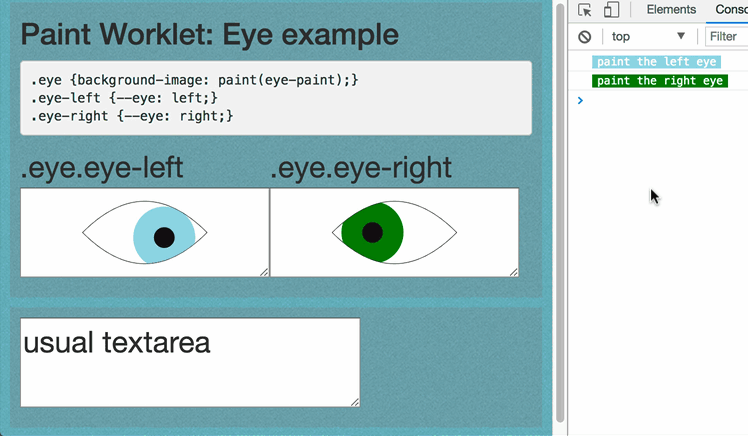
Activate "Rendering pane" -> "Paint Flashing" to highlight paints
- to create own layout algorithms
- having access to set constraints, behaviour, boundaries
- interact with blocks, fragments and even texts
/* CSS */
.center {
display: layout(centering);
}CSS
Layout
API

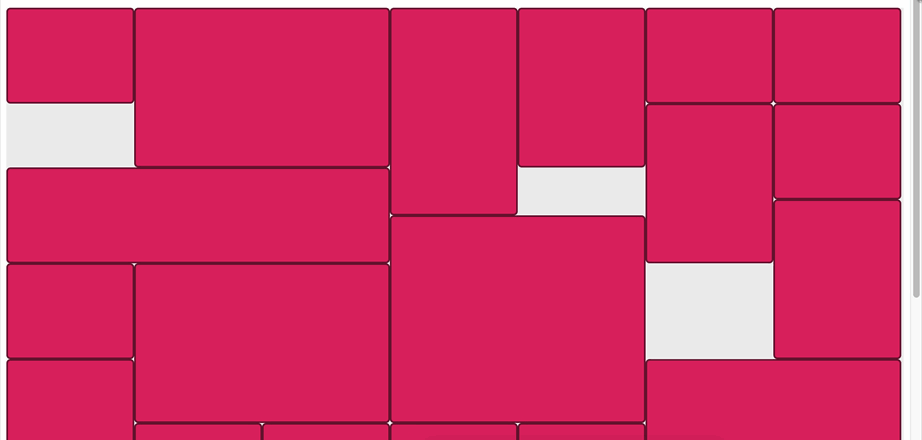
/* CSS */
.photos {
display: layout(masonry);
}// JS (layout worklet)
registerLayout('masonry',
class {
*layout(space, children,
styleMap, edges) {/*...*/}
});Sticky Header implemented in the stable version of Chrome using Houdini task force achievements
Web Animation API based, makes possible to run in own dedicated thread isolated from the main for performance
("best-effort" basis- runs on every frame, up to the frame deadline)
Mostly scroll-linked animations and effects:
- sticky elements
- smooth scroll animations
- scroll snapping
- scroll up bar

Use cases
Worklet and Web Animation API polyfills are available 🎉

CSS
Animation
Worklet
API
Compositor
Accelerated (e.g. compositor only) properties

Pixel
rendering
pipeline
Changing does not trigger any geometry changes or painting
Carried out by the compositor thread with the help of the GPU.
Property changes which can be handled by the compositor alone (not changing scroll offset/layout)

Promote with "will-change"
opacity
transform

Scroll Position Effects Demo- CSS/HTML/JS
<!-- HTML (scripts) -->
<!-- Polyfill checks and loads (if needed)
both Web Animation API and Animation Worklet polyfills -->
<script src="polyfill/anim-worklet.js"></script>
<script src="animator.js"></script>/* animator.js (load a Worklet module) */
window.animationWorkletPolyfill.addModule('worklet.js')
.then(()=> {
// onWorkletLoaded()
}).catch(console.error);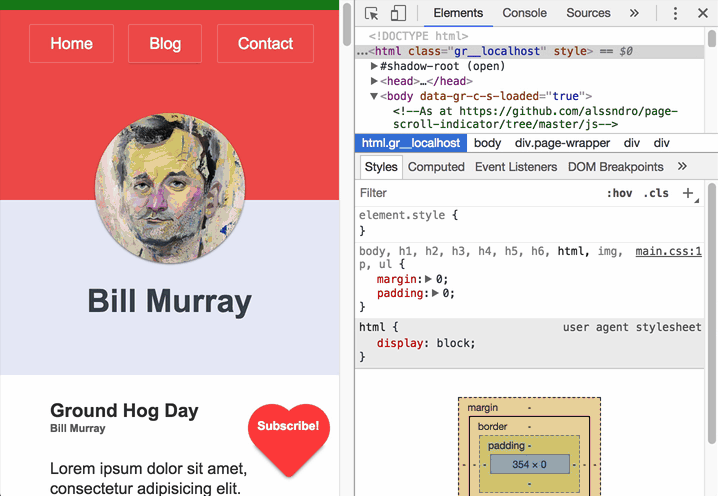
Animation Worklet itself
/* worklet.js - register and apply animations */
// Animators are classes registered in the worklet execution context
registerAnimator(
'scroll-position-animator',// animator name
class { // extends Web Animation
constructor(options) {
this.options = options;
}
// currentTime, KeyframeEffect and localTime concepts
// from Web Animation API
// animate function with animation frame logic
animate(currentTime, effect) {
// scroll position can be taken from option params
// const scrollPos = currentTime * this.options.scrollRange;
// each effect will apply the animation options
// from 0 to 100% scroll position in the scroll source
effect.children.forEach((children) => {
// currentTime is a Number,
// which represent the vertical scroll position
children.localTime = currentTime * 100;
});
}
}); Animator
/* animator.js (onWorkletLoaded() ) */
const scrollPositionAnimation = // animator instance
new WorkletAnimation(
'scroll-position-animator', // animation animator name
[ // animation effects
new KeyframeEffect(scrollPositionElement, [ // scroll position
{'transform': 'translateX(-100%)'}, // from
{'transform': 'translateX(0%)'} // to
],
{duration: 100, iterations: 1, fill: 'both'} // options
),
new KeyframeEffect(subscribeElement, [ // size and opacity
{'transform': 'scale(0.5)', 'opacity': 0}, // from
{'transform': 'scale(1)','opacity': 1} // to
],
{duration: 100, iterations: 1, fill: 'both'}) // options
],
new ScrollTimeline({ // animation timeline
scrollSource: document.querySelector('.page-wrapper'),
orientation: 'vertical'
})
);
scrollPositionAnimation.play(); // start and apply the animationAnimation Worklet result

"endScrollOffset" and "timeRange" options
// animation options
{
pageTimeline: new ScrollTimeline({
scrollSource,
orientation: 'vertical',
endScrollOffset: '375px',
timeRange: 375
}
Consclusions
Bright Reality
- start using CSS Custom Properties
- register Custom Properties from JS (when available) for performance improvements and progressive enhancement
- play with Animation Worklet using the polyfill
Bright Future
- experiment with Paint Worklet in Chrome
- stay tuned with CSS Houdini Group and specs
(Worklets, Layout, Font Metrics, Typed OM APIs etc.)
Thank you!

Online slides: https://slides.com/malyw/houdini-short